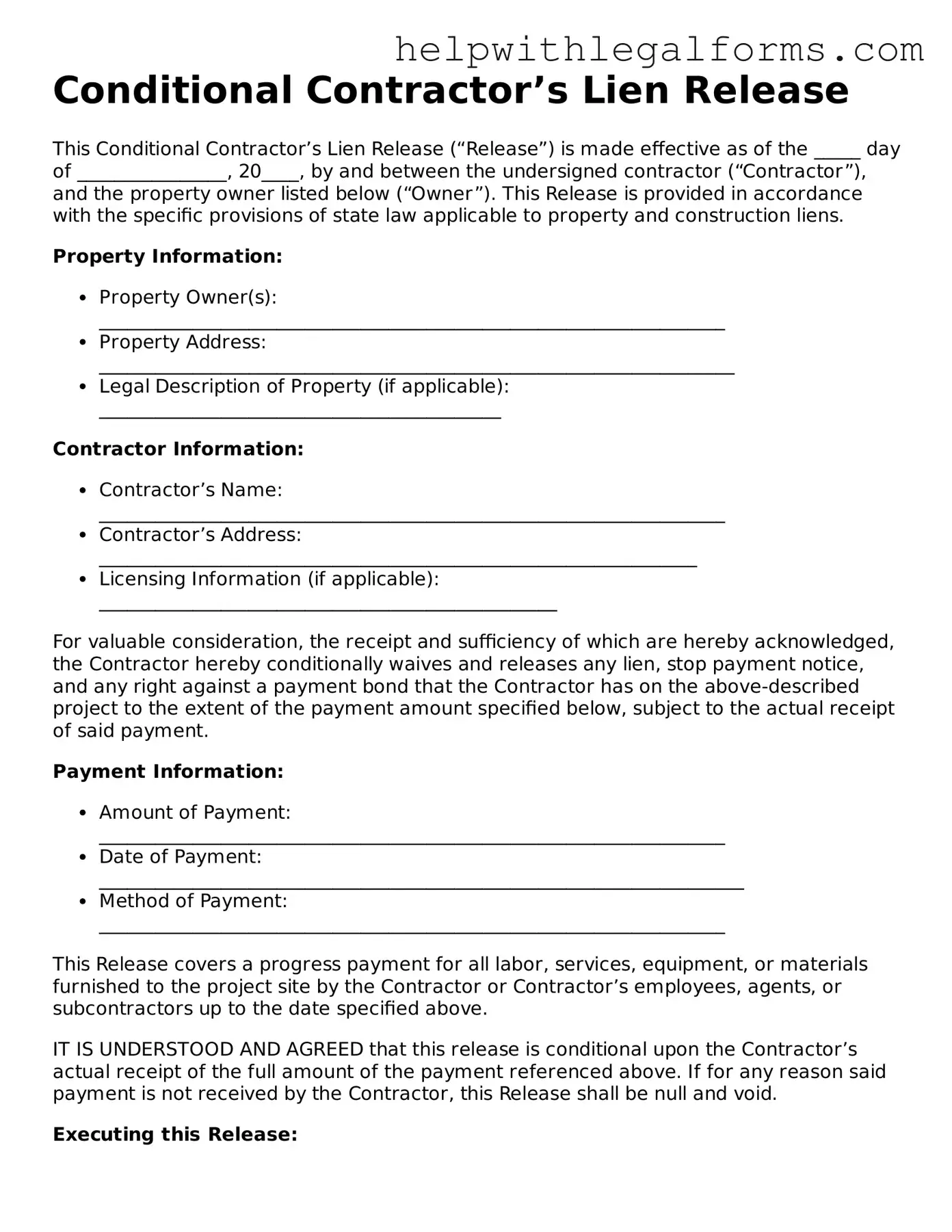Conditional Contractor’s Lien Release
This Conditional Contractor’s Lien Release (“Release”) is made effective as of the _____ day of ________________, 20____, by and between the undersigned contractor (“Contractor”), and the property owner listed below (“Owner”). This Release is provided in accordance with the specific provisions of state law applicable to property and construction liens.
Property Information:
- Property Owner(s): ___________________________________________________________________
- Property Address: ____________________________________________________________________
- Legal Description of Property (if applicable): ___________________________________________
Contractor Information:
- Contractor’s Name: ___________________________________________________________________
- Contractor’s Address: ________________________________________________________________
- Licensing Information (if applicable): _________________________________________________
For valuable consideration, the receipt and sufficiency of which are hereby acknowledged, the Contractor hereby conditionally waives and releases any lien, stop payment notice, and any right against a payment bond that the Contractor has on the above-described project to the extent of the payment amount specified below, subject to the actual receipt of said payment.
Payment Information:
- Amount of Payment: ___________________________________________________________________
- Date of Payment: _____________________________________________________________________
- Method of Payment: ___________________________________________________________________
This Release covers a progress payment for all labor, services, equipment, or materials furnished to the project site by the Contractor or Contractor’s employees, agents, or subcontractors up to the date specified above.
IT IS UNDERSTOOD AND AGREED that this release is conditional upon the Contractor’s actual receipt of the full amount of the payment referenced above. If for any reason said payment is not received by the Contractor, this Release shall be null and void.
Executing this Release:
The undersigned represents and warrants that he/she has the full authority to bind the Contractor to this Release. This Release shall be binding upon the Contractor, its successors, and assigns, and shall inure to the benefit of the Owner, its successors, and assigns.
State-Specific Acknowledgement (if applicable):
If this document is being executed in relation to a property located in a specific state that requires acknowledgment, the applicable state law is [_____________]. Compliance with such state-specific provisions has been met as follows: ___________________________________________________________________________________.
IN WITNESS WHEREOF, the parties have executed this Release as of the date first above written.
Contractor’s Signature: _______________________________________ Date: ___________________
Contractor’s Printed Name: ______________________________________________________________
Owner’s Signature: ___________________________________________ Date: ___________________
Owner’s Printed Name: __________________________________________________________________
